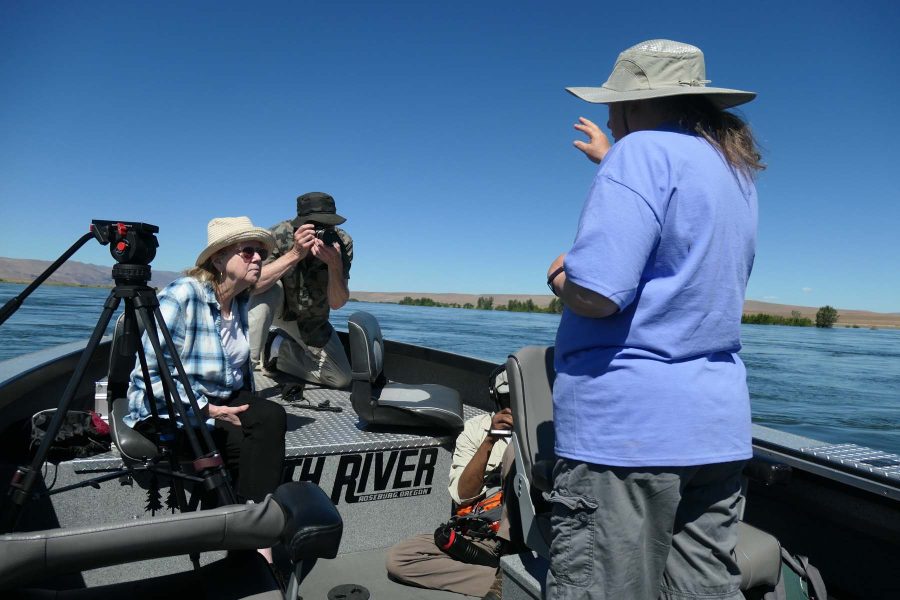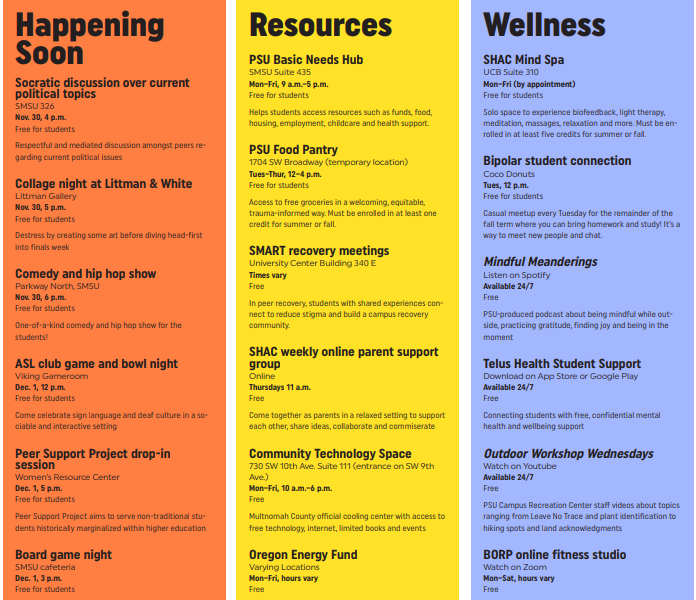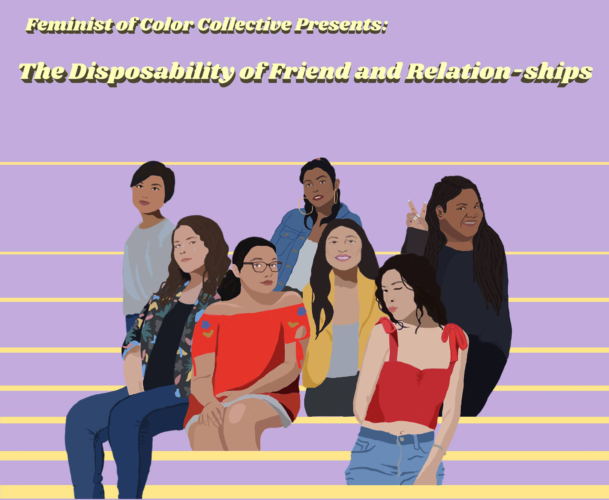A sizable crowd spilled from the inside of the room outwards, buzzing with laughter and joyful conversation. Once inside this room, one was greeted with warm lighting, smells of warm meals and lively music. Authentic artwork and furniture were scattered with great intention throughout the space—bits and pieces of a variety of cultures, all chosen with care.
This is the newly renovated MENASA (Middle East, North Africa and South Asia) Student Center, located in room 238 of Smith Memorial Student Union (SMSU). The center had its grand opening on Nov. 8.
Portland State has lacked a center dedicated to the MENASA region for many years, despite the fact that a significant population at PSU have heritage and connections to these places. This center aims to be a welcoming space and resource center for students with ties to the MENASA region, though all are welcome.
Seven years in the making
Members of the PSU community have been calling for a multicultural center dedicated to students of the MENASA regions for quite some time, seven years in fact. In the summer of 2016, the proposal for the MENASA Center was first mentioned in a cultural center strategic plan.
It wouldn’t be for another five years that this plan would really begin to come into fruition, when a room in SMSU was officially dedicated as the center in 2021. However, the center was incomplete, lacking much of what it has today. It wasn’t until 2023 that the MENASA Center really came into its own.
At the forefront of the grand opening of the fully actualized center is Ahmed El Mansouri, the assistant director of cultural resource centers at PSU and program coordinator for the MENASA Center.
“I just want to say that I think PSU is so lucky to have Mansouri here,” said PSU President Ann Cudd in her address to the crowd at the opening ceremony. “Mansouri is an incredible leader. He has really studied conflict resolution and the ideals of peace and dialogue, and we are very grateful for your leadership.”
“It took about a year,” said Mansouri in reference to the process of getting this center to its current state. “Eight months of visioning, and then four months of execution.”
A center of great intention
Mansouri’s work is dedicated to the stability and growth of the center, as a community building resource for MENASA students. During the grand opening, he buzzed around the room for hours, greeting and conversing with everyone who came through.
“I feel like I brought a certain part of the house with me,” said Mansouri in reference to the presence and general feeling the center invokes. “I think one of the biggest things is that we’re using this space as a tool, really, to offer students a piece of their home.”
Mansouri describes the space as an effort to create a homey atmosphere. Walking in, one is instantly greeted with a plethora of cozy amenities, from the warm lighting and pleasant smells, to the soft furniture in the northwest corner, complete with a 4K fireplace livestream, which ties everything together in a humorous yet simultaneously comforting manner.
To call this place a home would hardly be hyperbole, in fact it’s barely even a metaphor. The center is divided into five different sections, each of them designed after a room in a house.
First off is the kitchen, directly to your right as you walk through the door to the center. Complete with a refrigerator, ice and everything you need to prepare food. This one-stop-shop is more than one might expect to find in a campus lounge.
“You can heat up your food,” Mansouri said. “You can literally cook breakfast here if you wanted, because we have all the tools that you can accomplish that with!”
Next up is the living room, straight across from the kitchen. Complete with a library, couches, a television, a gaming console and video games.
Then there’s the private study section, a comfortable lounge similar to the living room, but complete with tools for zoning in on personal work. Across is the group study section, where students can use an audio-visual projector and screen, printers, computers and a whiteboard for whatever they see fit.
Finally, there’s the meditation area. “If they just want to take a short nap, if they want to meditate, if they want to pray, [they can do that here],” Mansouri said. The meditation area offers comfortable throws, beanbags, pillows and sleeping pads for students to utilize.
These areas come together to make a vibrant yet relaxing space which not only honors people from the MENASA region, but is additionally welcoming to all who wish to engage.
It is this celebration of MENASA cultures and the desire to share it with others that make this center so unique. All of the decor in the room has a story. Everything was selected as a tribute to the cultures the room aims to serve.
“I could have a conversation with you about this light, or about this table, and that is going to be very rich in culture,” Mansouri said. Indeed, the decorations stand out when one walks into the room. On a table in the living room sits two lego sets—one of the Taj Mahal and the other of the Great Pyramid of Giza.
The ceiling lights are one aspect of the room’s design which reveal a careful thoughtfulness. At first glance, they may not stand out much, 15–20 light bulbs scattered throughout the ceiling. However, upon further inspection, it becomes apparent that the lights are placed about at seemingly random intervals. Some are only a couple inches apart from one another, while in other sections of the ceiling there are gaps of a foot or more.
This is because each of these lights represent a country capital from the MENASA region. For instance, with the entire ceiling representing a map of MENASA, the light in the very center of the room represents Cairo. The reasoning behind this artistic inspiration is complex, and comes back to the initial goals which were laid out when planning out what this center ought to be.
“When we were meeting as the cultural resource center team in the summer to plan for [the next year], we were revisiting our values, our mission, and our vision,” Mansouri said. “We had a hard time initially differentiating between vision and mission. We eventually came to the conclusion that when you have a vision, that involves the future.”
“Our vision was a campus that has people with intersecting identities being able to show up without any compromise,” Mansouri said. “They don’t have to hide any aspect of their identity. They show up exactly as who they are. That’s our vision in, say, five years, six years, 10 years—whatever the case may be.”
Mansouri explained the center’s current missions being undertaken to accomplish a long term vision. “And what would be our mission now?” He said. “Our mission would be to create cultural spaces as a platform for these processes to take place and encourage that through our events, programs and training.”
The grand opening
The opening of the center began at 10 a.m. on Nov. 8. At 4 p.m., several speakers addressed the crowd which had come for dinner and games at the center, including Cudd.
“Portland State University is committed to being a welcome place of support, access and inclusion for all,” Cudd said. “This center formalizes our commitment to providing the same supportive space at PSU for the students of the MENASA region. A place where you can gather, access resources and engage in meaningful dialogue.”
The opening event had live music, with four musicians playing a variety of instruments in the study section of the room. Three of these musicians were from a Seattle-based Arabic music ensemble called House of Tarab.
“Tarab is a word that doesn’t exist in English,” said Michael Nageub, one of the band members. “It’s the transcendent feeling you get when you listen to music like this.”
Dr. Ame Lambert—the vice president of global diversity and inclusion at PSU—also spoke at the event.
“When I think of the MENASA Center, I think of a tale of two dreams,” Lambert said in her address. “First, the center represents a dream realized, that is the dream of having a physical center. It was a long, five-year journey, and I celebrate all of you. All of you are students who raised their voices, advocated and persisted.”
Lambert went on to thank the Associated Students of Portland State University and the Student Fee Committee for their efforts in approving a $250,000 to fund the new center.
“Secondly, the center represents a hopeful dream that has not yet been realized,” Lambert said. “And that is that this center will be a place for transformative engagement across differences, perspectives, personalities and even conflict.”
The road to founding this center was long and challenging, but through persistence and determination a passionate group of people have been able to bring this dream to life.






